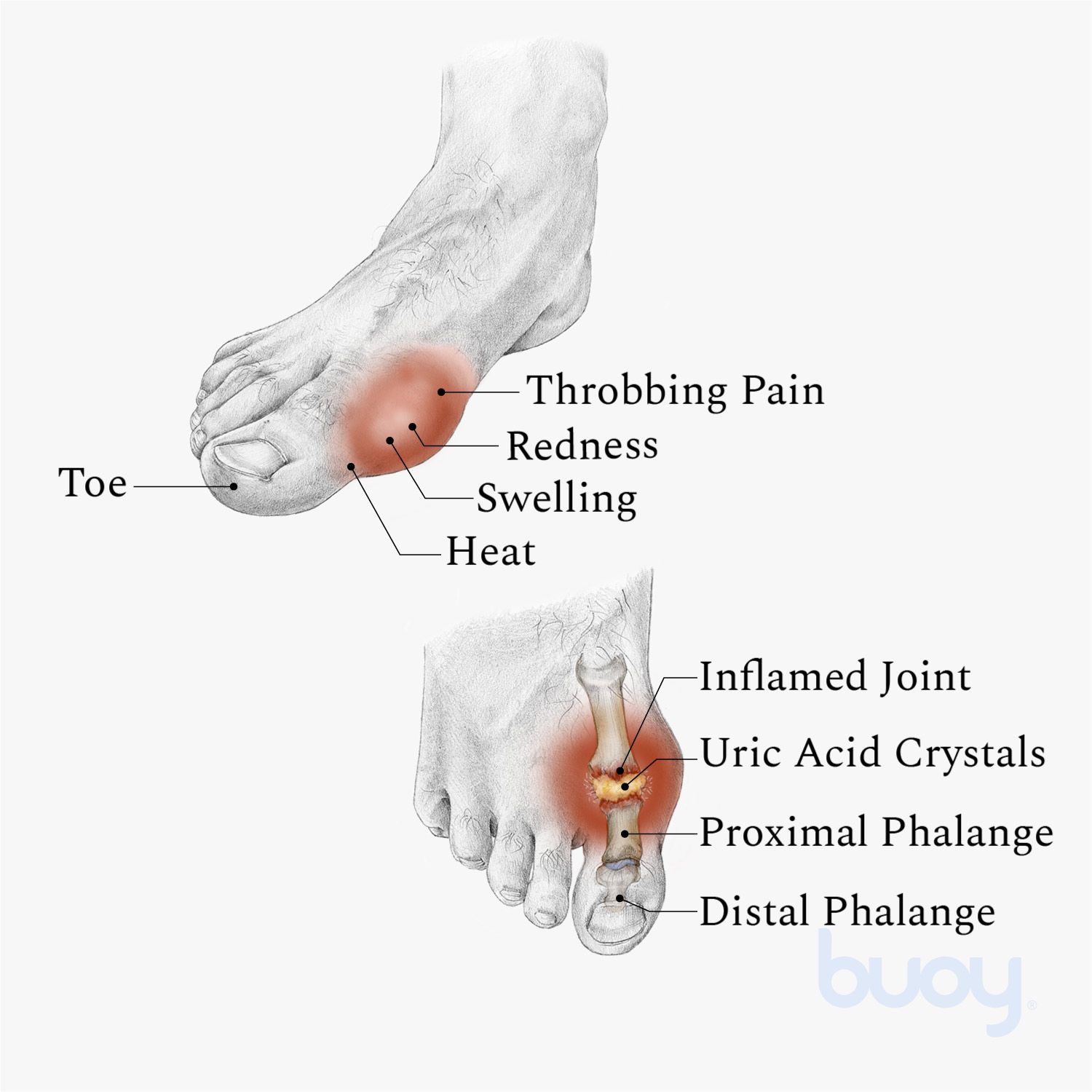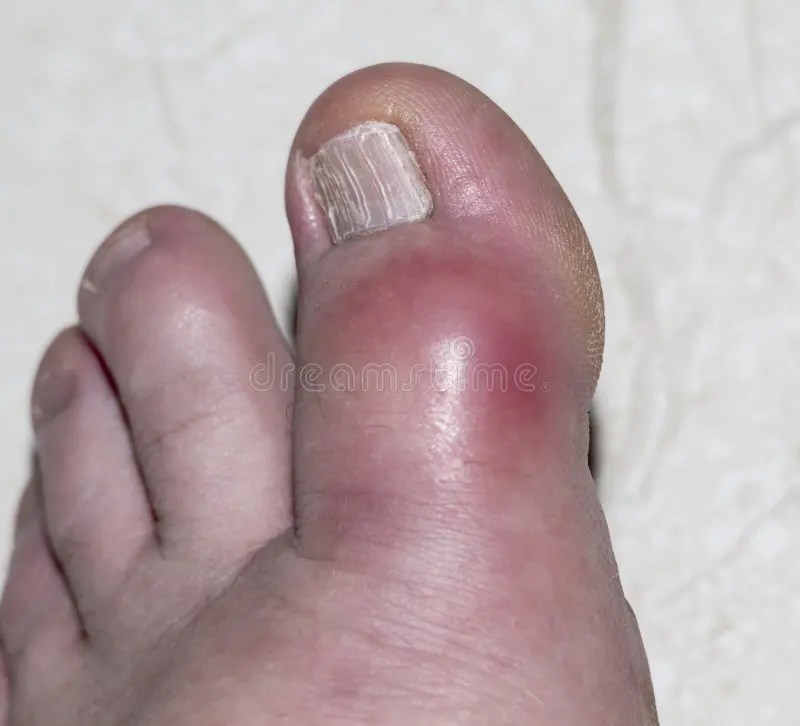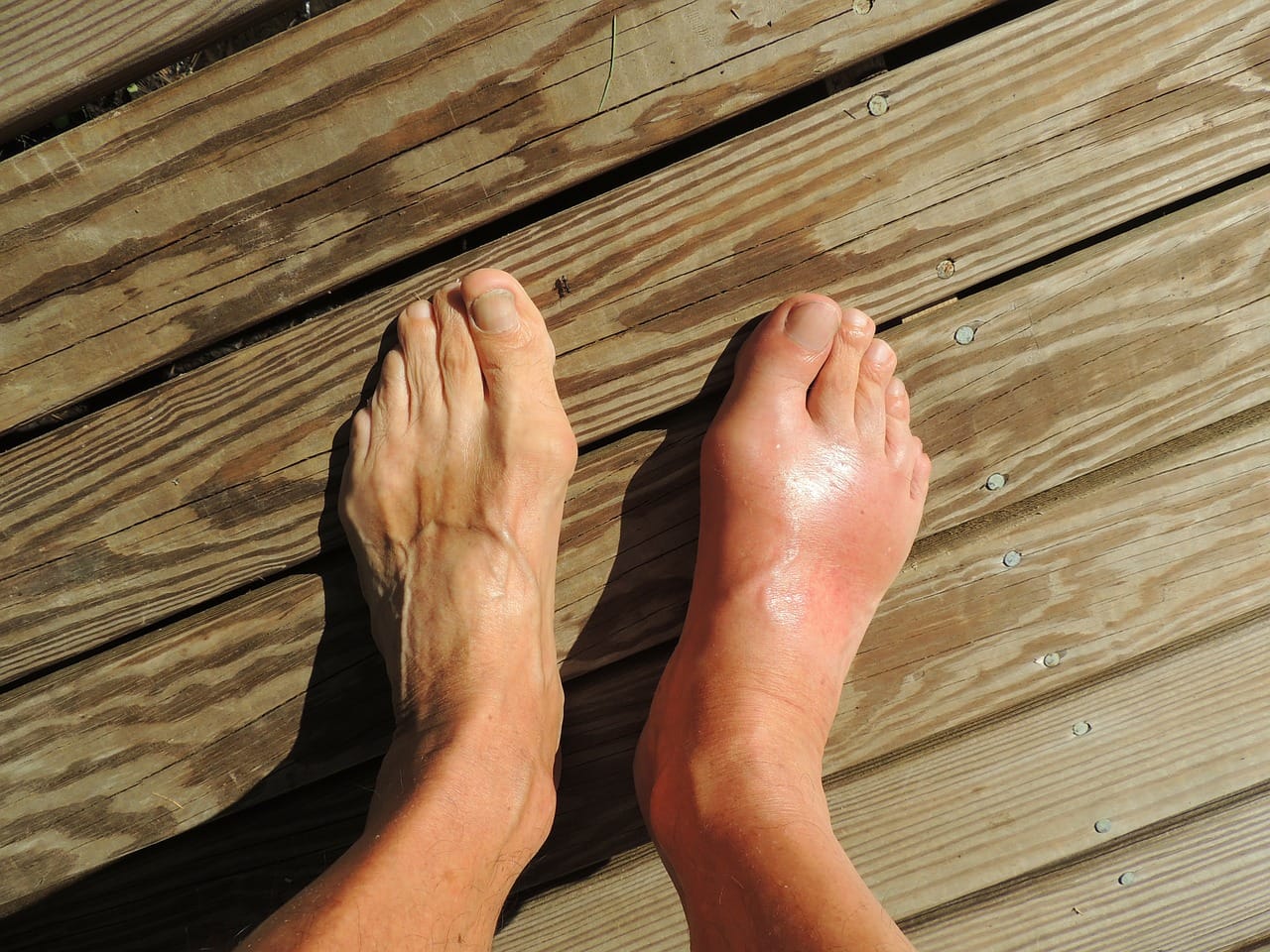The Ultimate Guide For Gout On Feet
Overview, Gout on feet is a common and complex form of arthritis that can affect anyone. It’s characterized by sudden, severe attacks of pain, swelling, redness and tenderness in one or more joints, most often in the big toe. An attack of gout can occur suddenly, often waking you up in the middle of the night with the sensation that your big toe is on fire.

Gout symptoms may come and go, but there are ways to manage symptoms and prevent flares. Products & Services, Show more products from Mayo Clinic Symptoms The signs and symptoms of gout almost always occur suddenly, and often at night. They include: Gout usually affects the big toe, but it can occur in any joint.
The pain is likely to be most severe within the first four to 12 hours after it begins. After the most severe pain subsides, some joint discomfort may last from a few days to a few weeks. Later attacks are likely to last longer and affect more joints. The affected joint or joints become swollen, tender, warm and red.
When to see a doctor, If you experience sudden, intense pain in a joint, call your doctor. Gout that goes untreated can lead to worsening pain and joint damage. Seek medical care immediately if you have a fever and a joint is hot and inflamed, which can be a sign of infection.
Gout On Feet: Symptoms, Causes, And Treatments – An Overview

In some people, receiving a vaccination can trigger a gout flare. Complications, People with gout can develop more-severe conditions, such as: Some people may never experience gout signs and symptoms again. Others may experience gout several times each year. Medications may help prevent gout attacks in people with recurrent gout.
Untreated gout may cause deposits of urate crystals to form under the skin in nodules called tophi (TOE-fie). gout and food. Tophi can develop in several areas, such as your fingers, hands, feet, elbows or Achilles tendons along the backs of your ankles. Tophi usually aren’t painful, but they can become swollen and tender during gout attacks.

Medications can help reduce the risk of kidney stones.
Causes of Gout, Uric acid build up is the primary cause of gout, but there are several common ways gout develops:Recent injuries may cause inflammation and uric acid build up, which may ultimately lead to gout, Kidney function issues and disease may hinder your kidneys’ ability to eliminate the correct amount of uric acid needed to prevent gout, Heredity may cause you to be more prone to kidney disease and issues, and may cause your body to naturally overproduce uric acid aiding in gout development, When coupled with factors like heredity and kidney function issues, certain foods may also cause the development of gout.
Not known Incorrect Statements About What Causes Gout & Prevents Future Flare-ups?
Treatment & Care, There are several common treatment and care options for gout. These options will often depend upon the severity of your gout’s development. Once you have been diagnosed with gout, oral medications are usually prescribed. gout joints affected. Within a few days, most of the symptoms will significantly decrease. Some people experience a significant improvement within a few hours of treatment.
Some other home applications that may help in treating gout are:Cold or hot water applications, Epsom salt baths, For more information about Gout, other foot problems and treatment options, or to have your feet assessed, contact us today or schedule an appointment at one of our conveniently located Middle Tennessee locations! (gout joints affected).
Acute gout attacks are characterized by a rapid onset of pain in the affected joint followed by warmth, swelling, reddish discoloration, and marked tenderness. The small joint at the base of the big toe is the most common site for an attack – gout on feet. Other joints that can be affected include the ankles, knees, wrists, fingers, and elbows.
These painful attacks usually subside in hours to days, with or without medication. In rare instances, an attack can last for weeks. Most people with gout will experience repeated bouts over the years..
Living With Gout In Your Feet Things To Know Before You Buy
Gout can typically be treated without surgery. But after many years, this condition can damage the joints, tear the tendons, and cause infections in the skin over the joints. Hard deposits, called tophi, can build up on your joints and in other places, like your ear. These lumps may be painful and swollen, and they can permanently damage your joints.
They may also want to take an X-ray of your joint. If you have symptoms of gout, you can start with a visit to your primary care doctor. If your gout is severe, you may need to see a specialist in joint diseases. Certain foods, medications, and conditions can set off gout symptoms.
If you have medical conditions or take medications that raise your risk of gout, ask your doctor how you can lower your risk of gout attacks. When uric acid crystals build up in joints for a long time, they produce hard deposits called tophi under the skin. Without treatment, these tophi can damage bone and cartilage and leave the joints permanently disfigured.
Gout pain can vary in severity. Pain in the big toe can be very intense at first. After the acute attack, it may subside to a dull ache. The pain, as well as swelling and other symptoms, are the result of the body launching a defense (by the immune system) against uric acid crystals in the joints.
Some Ideas on Treating Gout Attacks You Should Know
Gout is at least partly due to heredity. Researchers have found dozens of genes that increase people’s susceptibility to gout, including SLC2A9 and ABCG2. Genes associated with gout affect the amount of uric acid the body holds onto and releases. gout with fever. Because of genetic factors, gout runs in families. People with a parent, sibling, or other close relative who has gout are more likely to get this condition themselves.

While our team recommends a comprehensive, long-term treatment plan, there are times you simply need help getting through a painful gout flare-up – gout and food. Our experts at Utah Musculoskeletal Specialists put together this list of tips that can ease your acute gout attacks. Medication At the first signs of a gout flare-up, many people find that a regular dose of an over-the-counter nonsteroidal anti-inflammatory drug (NSAID) such as ibuprofen can be very effective at stopping the pain, or at least decreasing it.
We can recommend the right type of medication for you to keep on hand in case of sudden attack. Ice The inflammation that comes along with gout is often the main culprit causing your pain. Instead of, or in addition to, the over-the-counter medication, good, old-fashioned ice can do wonders to reduce the swelling and pain.
Caution: Don’t leave ice on the area for more than 20 minutes, and don’t use this method if you have nerve damage or diabetes. Rest When you have a gout attack, especially if it’s in your toe, no one has to tell you to get off your feet; the pain will lead you to do that instinctively.
For more Aging The Healthy Way Tips visit our Blog Page.
